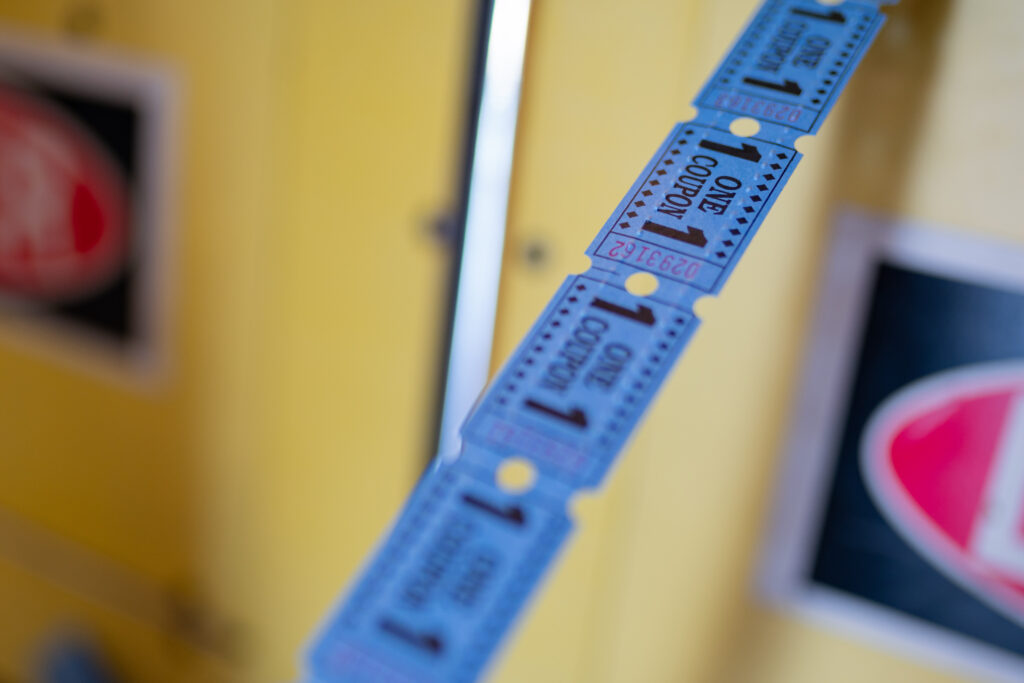2024: A Year of Transitions?
Cost of Goods Is as Important as Picking the Best Prizes!

by Howard McAuliffe, Partner, Pinnacle Entertainment Group
Prizes drive the modern redemption arcade revenues and profits. Typically, 75% or more of arcade revenues come from games that require a prize, including: games where the guests win tickets, cranes, and merchandisers. The prizes that drive this play are very important and as a result, most operators focus on finding the best ones for their locations. Many also understand the importance of keeping redemption rooms, cranes and merchandisers full, organized and looking like a retail display.
Where most FEC operators fall short is managing their merchandise holistically. Many try to outsource this to their redemption vendor, which, frankly, is not possible. Vendors can certainly help improve the process but offer no substitute for managing this essential piece of your business in-house. I believe most operators fall short in managing their merchandise because:
1) They don’t understand what to do or why it’s important.
2) It’s not easy. It is a multifaceted process that takes time and effort to execute.
This edition of RePlay is focused on the latest trends in prizes and sure, it’s fun and important to buy the best products for redemption. But, it’s equally important to manage the prizes with an understanding of the processes involved in redemption. There are several common issues related to product management in prize programs, which can lead to theft, lost revenues, high cost of goods, staff burnout and more.
Inaccurate Ticket Values
Many locations don’t understand ticket value. The value of a ticket is established in only one way: by the mark-up of the ticket value of your redemption prizes. This is where dollars are converted to tickets.
For example, if you buy an item for $1 and put it on the redemption wall for 100 tickets, your ticket is worth $.01. If you buy it for $1 and put it on the wall for 200 tickets, your ticket value is $.005. The “mark-up,” or how you set the ticket price compared to the item’s cost, is where ticket value is established.
This matters for several reasons, starting with an understanding of your payouts. If your card system has your tickets valued at $.01 (this is a manual setting you enter into the card system), but you’re marking your ticket values up, your payouts will be inaccurate because the ticket value you input does not match reality.
To help with understanding payout value, major redemption suppliers provide digital packing lists (DPLs). These save a lot of time when managing inventory because they come with your mark-up set, and allow the operator to download their received inventory directly into the card system, with the barcode and ticket value using your location’s markup. However, we often find that different vendors use different mark-ups in the same location. Also, locations that buy from Amazon or use vendors that don’t have DPLs end up relying on their employees to accurately price items, which rarely happens. We frequently find inconsistent mark-ups across vendors, which makes it impossible to accurately track payouts.
Poor Inventory Processes or Lack of Physical Inventory
Counting all the product in your redemption store (or counter), cranes and back rooms is not fun. It’s especially challenging when there is no system for doing that inventory. There are three major steps required to make physical inventory faster and more accurate, which come with the added benefit of also helping your operational efficiency:
1) Keep the back room organized by ticket values, keeping crane and merchandiser inventory separate.
2) Make sure all barcodes scan properly. Any time a barcode does not scan, coordinate with the vendor to update the DPL. For items you buy from companies without a DPL, a best practice is to create your own DPL and download it into the card system.
3) Make sure all barcodes scan ticket values that match the ticket displays on the wall.
Actively Managing Key Performance Indicators (KPI) in Card Systems
It’s not possible to efficiently manage your redemption data if the first two issues are not addressed. It’s vital to have accuracy in ticket values, inventory and item scanning for the card system’s data to be helpful. Once your program operates correctly, the card system can help you take it to the next level. There are a tremendous number of ways to use the data. Here are just a few to start with:
1) Compare the tickets out of the games to the tickets redeemed, and then compare the value of the tickets redeemed to your actual cost of goods sold (COGS). Doing this will enable you to understand how much your customers save, identify prize theft, and see if employees are giving away tickets.
2) Sort your prizes by ticket value to ensure you have a proper variety of options. It’s common for a location to have too many prizes of a certain price point and not enough of others. For example, you might find that you have ten 50-ticket items but no 75-ticket items, or something similar. Finding this out lets you order prizes properly, keeping the right mix of ticket values.
3) See how many weeks of stock you have of an item in inventory. This ensures you’re not reordering items you already have plenty of and it can also help if you have some items in surplus by reducing the price or otherwise helping you move that inventory.
Managing redemption inventory isn’t as fun as ordering and displaying great prizes, but it’s crucial to your business. You can elevate your arcade’s operations and revenues by implementing and managing a redemption process. Company leadership must realize that it’s unrealistic to expect an hourly employee – someone in a position that frequently turns over – to implement this process and manage it well over time. Leadership must understand this aspect of the business before a true redemption program can function optimally. Fortunately, the benefits of doing this vastly outweigh the significant costs in dollars and time!
Howard McAuliffe loves to imagine and implement new products, business models, and ideas, and is a partner in Pinnacle Entertainment Group Inc. He’s an industry veteran who got his start in the business when he was just 16 and has 20 years of expertise in product development, as well as FEC and route operations. Howard’s wife Reem and young son Sami are the center of life outside of work. When he’s not working, Howard can be found enjoying the outdoors, hiking, fishing and mountaineering. Traveling anywhere new or to old favorites like the American West is a passion. Readers can visit www.grouppinnacle.com for more information or contact Howard at howardmc@grouppinnacle.com, he welcomes positive as well as constructive feedback and counterpoints.

